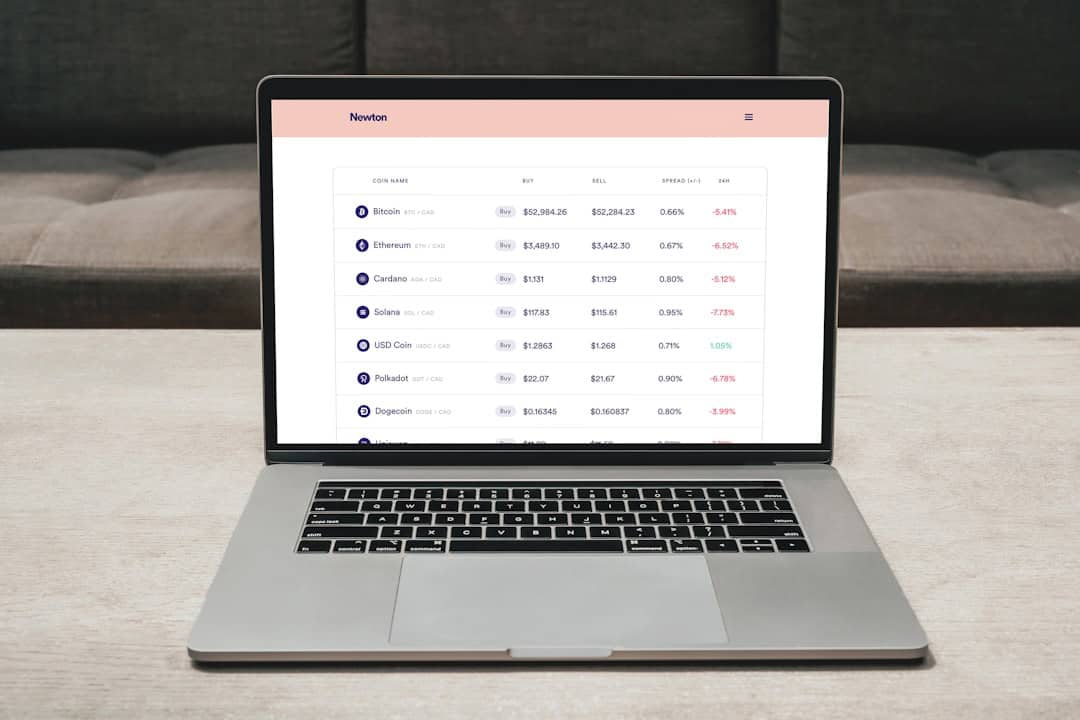Zero Trust Network Access (ZTNA) is a security framework designed to address limitations in traditional network security approaches. Unlike conventional models that rely on perimeter-based defenses, ZTNA assumes threats exist both inside and outside the network. This model focuses on verifying user and device identities, granting access based on specific policies regardless of the user’s location relative to the corporate network.
ZTNA operates on the principle of least privilege, granting users access only to resources necessary for their job functions. This approach minimizes the risk of lateral movement by potential attackers within the network. ZTNA incorporates continuous monitoring and adaptive access controls, dynamically adjusting access privileges based on the changing risk posture of users and devices.
By shifting the security focus from the network perimeter to individual users and devices, ZTNA offers a more effective approach in today’s complex and distributed IT environments. Implementation of ZTNA can significantly reduce an organization’s attack surface and enhance overall security posture.
Key Takeaways
- Zero Trust Network Access (ZTNA) is a security model that eliminates the idea of trust based on location and adopts a “never trust, always verify” approach.
- Implementing Cisco ZTNA provides maximum security by ensuring that only authorized users and devices have access to specific applications and data.
- Key features and benefits of Cisco ZTNA include granular access control, continuous monitoring, and the ability to adapt to dynamic business needs.
- Best practices for maximizing security with Cisco ZTNA include implementing strong authentication methods, regularly updating access policies, and conducting thorough risk assessments.
- Integrating Cisco ZTNA with existing security infrastructure allows for seamless protection of resources and applications across the network.
- Ensuring compliance and regulatory requirements with Cisco ZTNA involves implementing access controls, monitoring user activity, and maintaining audit trails.
- Future trends and developments in ZTNA include the integration of artificial intelligence and machine learning for more advanced threat detection and response capabilities.
Implementing Cisco ZTNA for Maximum Security
Secure Access to Applications and Resources
One of the key components of Cisco ZTNA is its ability to provide secure access to applications and resources, without the need for users to connect to the corporate network. This is achieved through a combination of identity-based access controls, multi-factor authentication, and encryption, ensuring that sensitive data remains protected at all times.
Unified Policy Framework for Granular Access Control
Furthermore, Cisco ZTNA offers a unified policy framework that allows organizations to define granular access policies based on user roles, device posture, and other contextual attributes. This ensures that access privileges are tailored to the specific needs of individual users, while also adapting to changes in the risk landscape.
Maximizing Security without Compromising User Experience
By implementing Cisco ZTNA, organizations can achieve maximum security without compromising user experience or productivity. With its robust security features and flexible deployment options, Cisco ZTNA is well-positioned to meet the evolving security needs of modern enterprises.
Key Features and Benefits of Cisco ZTNA

Cisco ZTNA offers a range of key features and benefits that make it a compelling solution for organizations looking to enhance their security posture. Some of the key features of Cisco ZTNA include: 1. Identity-based access controls: Cisco ZTNA allows organizations to define access policies based on user identities, ensuring that only authorized users have access to corporate resources.
2. Multi-factor authentication: Cisco ZTNA supports multi-factor authentication methods, such as SMS codes, biometric authentication, and hardware tokens, to provide an additional layer of security for user access. 3.
Dynamic access controls: Cisco ZTNA incorporates dynamic access controls that adapt to changes in user behavior and device posture, ensuring that access privileges are always aligned with the current risk landscape. 4. Application-level access: Cisco ZTNA provides granular control over application-level access, allowing organizations to define specific access policies for individual applications and resources.
5. Secure connectivity: Cisco ZTNA ensures secure connectivity for remote users and branch offices, without the need for a VPN or direct network access. The benefits of implementing Cisco ZTNA are numerous, including improved security posture, reduced attack surface, enhanced user experience, and simplified management of access policies.
By leveraging the key features of Cisco ZTNA, organizations can achieve a more robust and effective security posture, while also enabling secure access for remote users and distributed workforces.
Best Practices for Maximizing Security with Cisco ZTNA
| Best Practices | Metrics |
|---|---|
| Implement Zero Trust Network Access (ZTNA) | Reduction in unauthorized access attempts |
| Enforce strict access controls | Decrease in successful cyber attacks |
| Use multi-factor authentication | Reduction in compromised credentials |
| Regularly update and patch systems | Decrease in vulnerabilities exploited |
| Monitor and analyze network traffic | Early detection of suspicious activities |
To maximize security with Cisco ZTNA, organizations should follow a set of best practices that ensure the effective implementation and management of the solution. Some best practices for maximizing security with Cisco ZTNA include: 1. Define granular access policies: Organizations should define granular access policies based on user roles, device posture, and other contextual attributes to ensure that access privileges are tailored to specific needs.
2. Implement multi-factor authentication: Organizations should implement multi-factor authentication methods to provide an additional layer of security for user access, reducing the risk of unauthorized access. 3.
Continuously monitor user behavior: Organizations should continuously monitor user behavior and device posture to identify any anomalies or potential security threats, and adjust access controls accordingly. 4. Regularly update access policies: Organizations should regularly review and update access policies to ensure that they remain aligned with the current risk landscape and business requirements.
5. Provide user education: Organizations should provide user education and awareness training to ensure that employees understand the importance of secure access practices and adhere to security policies. By following these best practices, organizations can maximize security with Cisco ZTNA and ensure that their security posture remains robust and effective in the face of evolving threats and challenges.
Integrating Cisco ZTNA with Existing Security Infrastructure
Integrating Cisco ZTNA with existing security infrastructure is essential for ensuring a cohesive and comprehensive security posture. By integrating Cisco ZTNA with other security solutions, organizations can leverage the strengths of each solution to create a unified and effective security ecosystem. One key aspect of integrating Cisco ZTNA with existing security infrastructure is interoperability.
Organizations should ensure that Cisco ZTNA seamlessly integrates with their existing identity management systems, endpoint security solutions, and network security controls to provide a unified view of security across the organization. Furthermore, integrating Cisco ZTNA with existing security infrastructure enables organizations to leverage the capabilities of each solution to enhance overall security effectiveness. For example, by integrating Cisco ZTNA with endpoint security solutions, organizations can ensure that only compliant devices have access to corporate resources, reducing the risk of compromised endpoints.
By integrating Cisco ZTNA with existing security infrastructure, organizations can create a more resilient and effective security posture that addresses the complexities of modern IT environments while also ensuring seamless user experience and productivity.
Ensuring Compliance and Regulatory Requirements with Cisco ZTNA

Ensuring compliance with regulatory requirements is a critical aspect of any organization’s security strategy. By leveraging Cisco ZTNA, organizations can ensure compliance with a range of regulatory requirements, including GDPR, HIPAA, PCI DSS, and others. One way in which Cisco ZTNA helps organizations meet compliance requirements is through its granular access controls.
By defining access policies based on regulatory requirements, organizations can ensure that only authorized users have access to sensitive data and applications, reducing the risk of non-compliance. Furthermore, Cisco ZTNA provides detailed visibility into user access and activity, enabling organizations to demonstrate compliance with regulatory requirements through comprehensive audit trails and reporting capabilities. By implementing Cisco ZTNA, organizations can also ensure compliance with data protection regulations by encrypting sensitive data in transit and at rest, ensuring that data remains protected at all times.
Overall, by leveraging the capabilities of Cisco ZTNA, organizations can ensure compliance with regulatory requirements while also enhancing their overall security posture in today’s complex regulatory landscape.
Future Trends and Developments in Zero Trust Network Access (ZTNA)
The future of Zero Trust Network Access (ZTNA) is poised for significant growth and development as organizations continue to grapple with evolving security challenges in an increasingly distributed IT landscape. One key trend in the future of ZTNA is the integration of artificial intelligence (AI) and machine learning (ML) capabilities into ZTNA solutions. By leveraging AI and ML technologies, ZTNA solutions can better analyze user behavior and device posture to identify potential security threats in real-time and adapt access controls accordingly.
Another future development in ZTNA is the convergence of ZTNA with Secure Access Service Edge (SASE) solutions. As organizations increasingly adopt cloud-based applications and services, the integration of ZTNA with SASE will enable organizations to provide secure access to cloud resources while also ensuring consistent security policies across all edges of the network. Furthermore, the future of ZTNA will likely see increased emphasis on user-centric security models that prioritize user experience without compromising security.
This will involve the development of more seamless and frictionless authentication methods that enable secure access for users while also providing robust protection against threats. In conclusion, the future trends and developments in Zero Trust Network Access (ZTNA) are poised to revolutionize the way organizations approach security in an increasingly complex and distributed IT environment. By embracing these trends and developments, organizations can stay ahead of evolving threats while also ensuring seamless user experience and productivity.
If you’re interested in exploring the concept of parallel worlds and connecting with others in the metaverse, you may want to check out this article on parallel worlds in the megaverse. It delves into the idea of multiple interconnected virtual worlds and the potential for cross-platform connectivity. Cisco’s Zero Trust Network Access (ZTNA) could play a crucial role in securing these connections and ensuring a safe and seamless experience for users across different metaverse environments.
FAQs
What is Cisco ZTNA?
Cisco Zero Trust Network Access (ZTNA) is a security framework that ensures secure access to applications and resources, regardless of the user’s location. It verifies the identity of users and devices before granting access, reducing the risk of unauthorized access and potential security breaches.
How does Cisco ZTNA work?
Cisco ZTNA uses a “never trust, always verify” approach to access control. It authenticates and authorizes users and devices based on various factors such as user identity, device health, location, and application sensitivity. It then provides secure access to specific applications and resources based on the verified criteria.
What are the benefits of using Cisco ZTNA?
Some of the benefits of using Cisco ZTNA include enhanced security, improved user experience, simplified access management, and the ability to adapt to changing network environments. It also helps organizations comply with regulatory requirements and protect sensitive data from unauthorized access.
Is Cisco ZTNA suitable for all types of organizations?
Cisco ZTNA is designed to be scalable and adaptable, making it suitable for organizations of all sizes and industries. It can be tailored to meet the specific security and access control needs of different organizations, including those with remote or mobile workforces.
How does Cisco ZTNA differ from traditional VPN solutions?
Unlike traditional VPN solutions, Cisco ZTNA provides more granular access control and does not require users to be on the corporate network to access applications and resources. It also offers a more seamless and secure user experience, as well as better protection against unauthorized access and potential security threats.











Leave a Reply